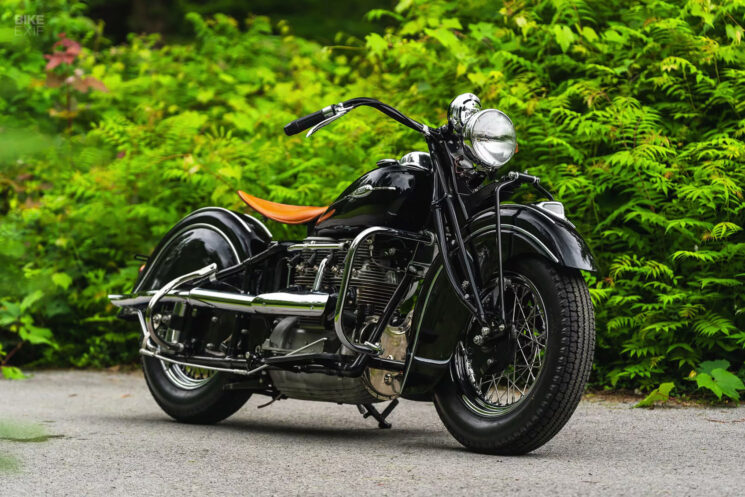
Mecum’s Monterey 2024 sale is swiftly approaching, and the U.S. auction powerhouse has a field of 100 vintage motorcycles selling August 15-17. With everything from turn-of-the-century cycles to a 2023 Ducati Lamborghini Streetfighter on the docket, there’s plenty to choose from, but we feel the following three Lots deserve to have their stories told.

Jimmy “Daredevil” Washburn’s Harley-Davidson VL
40 years before Knievel’s Skycycle completed a somewhat anticlimactic descent into the Snake River Canyon, motorcycle stunt riding looked a little different in America. Regional stunt riders made names for themselves by riding the wall, jumping second-hand bobbers and crashing through flaming obstacles in spectacular fashion. A rising star, touring the best venues in California, Jimmy “Daredevil” Washburn was certainly one of the biggest names on two wheels in the 1930s.
Picking prunes at 10 cents a box, Washburn was able to fund the purchase of his first bike—a 1917 Harley-Davidson that set him back $75. By 1925, he’d learned how to ride the wall and was touring local carnivals for $2 a day pay.

Washburn was an accomplished racer and was headlining an entire team of stunt riders by the 1930s, often referred to as ‘Dare Devil Washburn’s Mystery Squadron.’ His signature stunts included jumping over a sedan at 70 mph, and crashing through glass, brick and flaming board walls, and in 1934, Washburn jumped a distance of 65 feet over eight sedans. Washburn toured throughout North America, Europe and Australia, and headlined the Chicago and New York World’s Fairs. His stunt riding can also be seen in the 1936 film Crash Donovan.
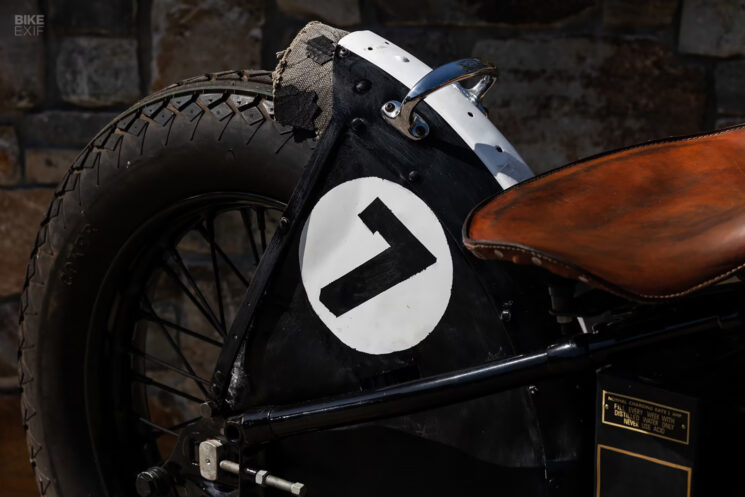
Considering the rough nature of his feats, it’s surprising the man lived to tell about them, but even more astonishing that his machine did as well, as ‘Daredevil Washburn built his legacy on this 1932 Harley-Davidson VL. The bike was purchased in the mid-’30s for a mere $200, and served as his main stunt bike for most of his career.
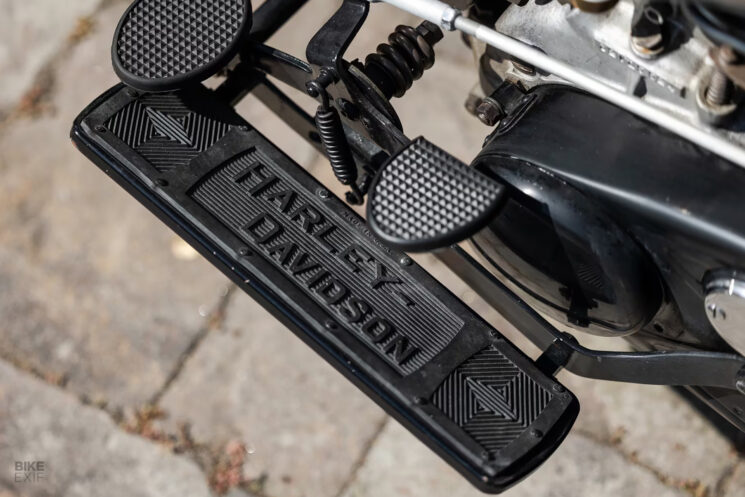
The second-hand VL was stripped back and given the standard bobber treatment with a bobbed rear fender, a megaphone exhaust and all superfluous road equipment removed. The triple-diamond paint scheme and No. 7 roundels reflect the scheme Washburn most frequently used, and the front crash bars and screen that made his wall crash stunts possible are still fitted.
Retained by the Washburn family for decades, and accompanied by a collection of photographs and memorabilia, the Daredevil’s VL is a machine worthy of display at any major museum.
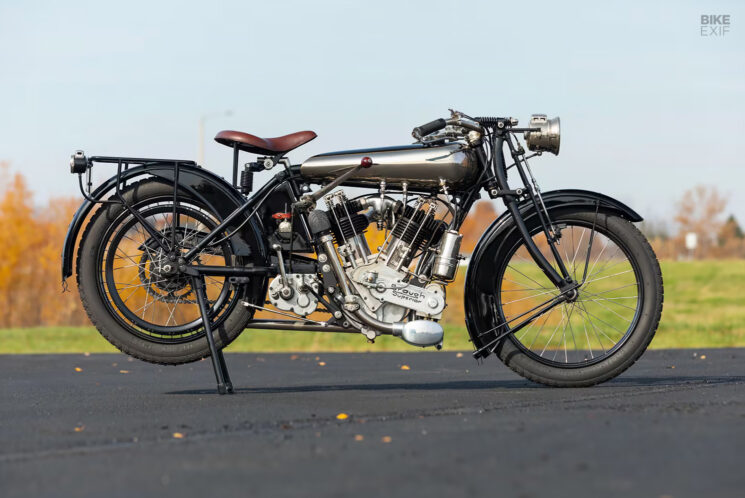
1922 Brough Superior Mark 1 90 Bore
William E. Brough’s Brough Motorcycles enjoyed moderate success in the wake of WWI, but his young son George had illusions of grandeur as he developed a new 500 cc flat-twin with aluminum cases, pistons and ball-bearing camshafts. George envisioned an exclusive motorcycle of exceptional quality and performance, and he was willing to part ways with his father to build it.
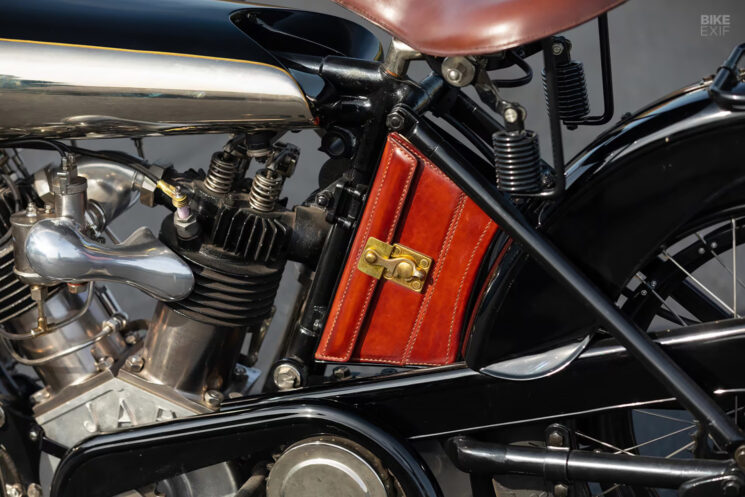
George went out on his own in 1919 at 29 years old, and spent his interest in Brough Motorcycles on a piece of property on Haydn Road in Nottingham. While his new shop was being built, George worked on his first few motorcycles in his father’s garage after securing a six-year-old stock of engines from J.A. Prestwick. Despite its humble beginnings, the genius in George’s early bikes showed, and an old drinking buddy joked that he should name his company Brough Superior. William was less than entertained, but the name stuck.
George first advertised his Mark 1 Brough Superior in 1920, calling it an ‘atmosphere disturber,’ and clearly stating that his new machine offered unmatched performance and quality. The deposit checks poured in, and by 1922, Brough Superior was building over 100 bikes a year.

While his later models made Brough famous (the SS80 and SS100), the excellence of Brough’s approach was immediately evident in the Mark 1. The frame was a sturdy open diamond design with Brampton forks, the Enfield or Webb wheels used 10-gauge spokes and the bicycle-style brakes were considered more than adequate for the time. When most other bikes used angular tanks under the top tube, the Mark 1 was graced with a streamlined, hand-formed tank over the frame finished in beautiful nickel plating.
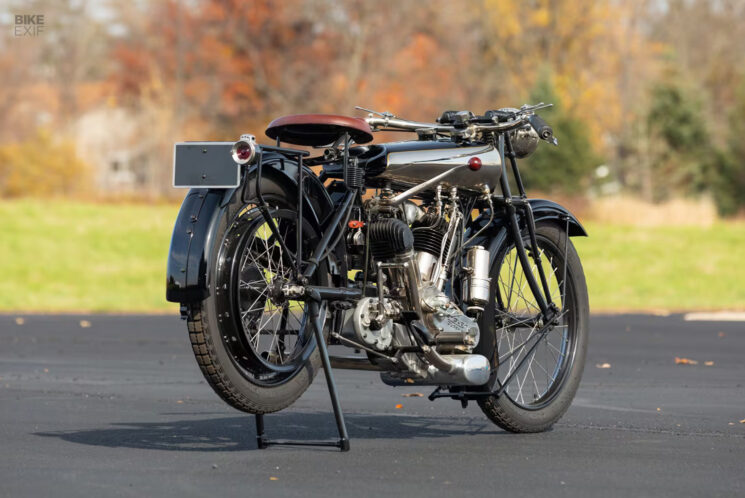
Powering the Mark 1 was a 986 cc J.A.P. 50-degree V-twin, nicknamed the ‘90 Bore’ for its cylinder dimensions (90 mm bore and 77.5 mm stroke), with three-ring aluminum pistons, sandblasted cases, plated valve gear and a polished cast-aluminum silencer. The Mark 1 could run 60 mph all day, would hit 80 mph flat out, and was almost certainly faster than anything else on the road.
It’s estimated that Brough built around 100 90-Bore Mark 1s between 1919 and 1923 before being replaced by the legendary SS80, and just a few are believed to exist today. Mecum’s Lot R112.1 is a spectacular example from 1922, wearing a concours restoration worthy of top honors at the October 2019 Motoroclassica Concours.
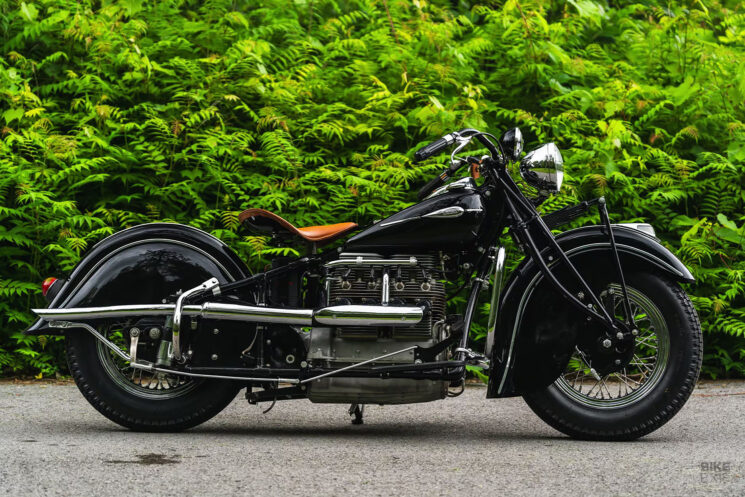
1942 Indian Four Model 441
Few (if any) motorcycles of the day can match the stage presence of the Indian Four, with its elegant inline four-cylinder, fully-sprung chassis and deco skirted fenders. Easily recognizable as one of the most iconic and desirable American motorcycles ever built, history has been awfully kind to the model considering its role in the brand’s decline.
Reliability and sporting prowess established Indian as the number one motorcycle in America, but after allocating all of its inventory to the military in WWI (effectively depriving its dealer network), the brand found itself eating Harley-Davidson’s dust. Strategic moves in innovation and image led to the creation of Indian’s most successful models, the versatile Scout and the fully-sprung Cheif, and Indian was closing in on Harley’s sales by 1940.
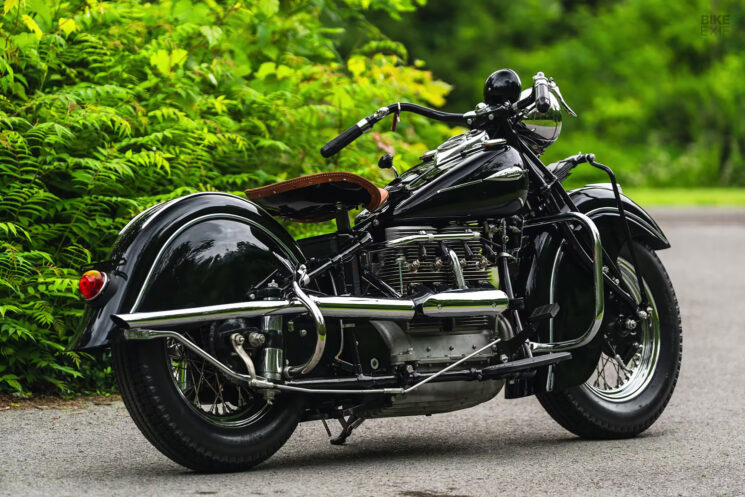
So what went wrong for Indian? It was a combination of factors that led to the skeletal, post-war remains of the company, but there’s no denying the Indian Four’s contribution to the company’s troubled finances.
Indian acquired the Ace Motor Corporation in 1927, including William G. Henderson’s latest four-cylinder design, and quickly rebranded the bike as the Indian Ace. The bike was changed year to year, becoming less Ace and more Indian with a stronger five-bearing crankshaft, and Indian’s Indian’s trailing-link fork and quarter-elliptic leaf spring. Despite the improvements, there was very little demand for flagship motorcycles in the thick of the Great Depression, as the Indian Four sold for the price of an average family sedan.

From 1936 to 1937, the Four was fit with a new inlet-over-exhaust cylinder head that improved fuel vaporization and increased power, but the design directed too much heat at the rider’s business, and the previous valve arrangement returned for 1938. The last Fours were arguably the best of the bunch, now boasting the same skirted fenders and plunger rear suspension as the Chief from 1940 on.
Indian’s sizable investment in the Four models never materialized, with around 5,000 bikes built over 15 years, and the company limped on after WWII with only the Chief and a few rebadged foreign bikes in the stable.
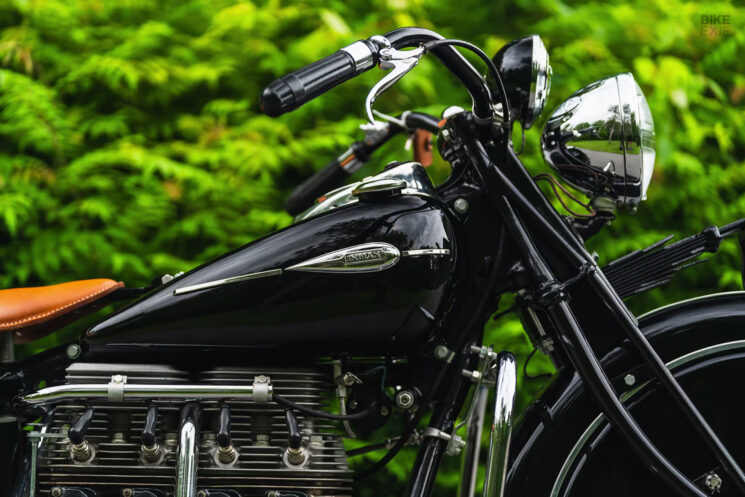
While the story of the Indian Four is no fairytale, it does nothing to detract from the staggering beauty of bikes like Mecum’s Lot R204—a fully restored ’42 Model 441. Expertly restored by 4th Coast Fours in 2023, the bike presents as new with 375 miles on the clock. Equal parts fine Americana and art-deco excellence, this Indian Four will surely grab six-figure bids and be the pride of someone’s collection.
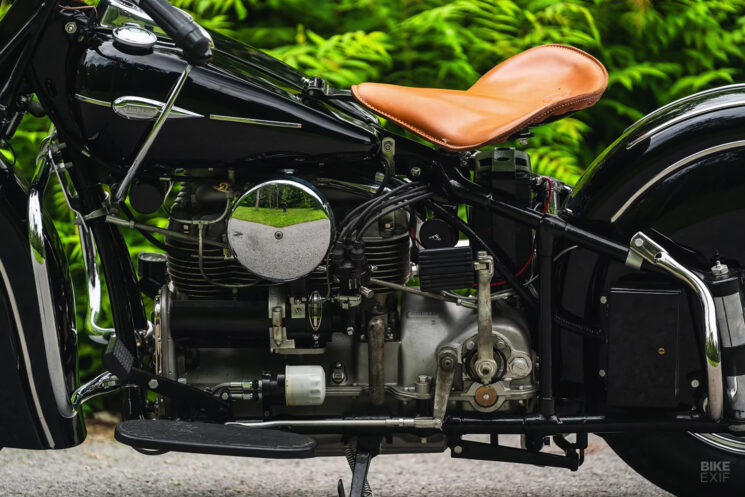
Source: Mecum Auctions
from Bike EXIF https://ift.tt/w3JHEvn
No comments:
Post a Comment